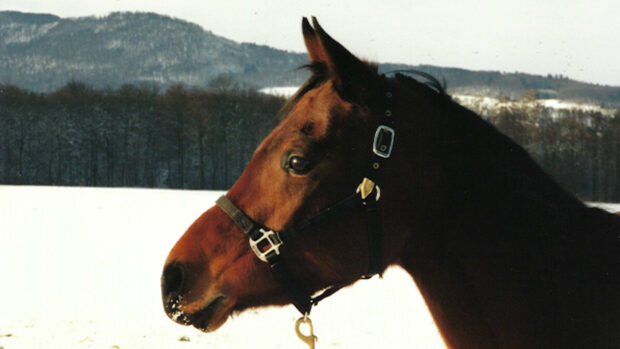A new study has questioned the ethics of restrictive noseband use after it found permanent bone changes in a significant percentage of horses.
X-rays revealed a pattern of thinning in the nasal bones and bone deposits on the mandible (jawbone) at the site where nosebands would apply pressure.
Researchers asked two independent vets to look a sample of 144 mature warmblood cavalry horses in Mexico City — the vets concurred that more than 37.5% showed one of more radiographic changes to the nasal bones while 13.8% had changes to the mandible.
The authors also conducted a manual examination, recording that between 82% and 84% of the horses showed signs of nasal bone deposition on palpation. Of the 144 horses assessed, 76 also had unnaturally white hairs on the nose.
The study’s seven authors, Lucia Perez-Manrique and others, noted that the use of restrictive nosebands in horse sport was becoming of “increasing concern to veterinarians and equitation scientists”, which had led them to explore whether their use was causing damage to the structures of the face.
“Restrictive nosebands are used in equestrian sports to hold the bit in place and reduce mouth-opening, a response that can attract penalties in some sports and is thought to reduce the rider’s control of the horse,” they said.
“Sustained pressure from such tightly fitted (restrictive) nosebands denies normal behaviour and thus, causes frustration and distress that can jeopardise horse welfare. It also may push the cheek against the molar teeth, compress soft tissues including blood vessels and nerves, and possibly induce chronic changes to underlying bone.”
The authors observed that historical guidelines for noseband fit — allowing a gap of two fingers between the noseband and the face — were being overlooked to create a competitive advantage. The usefulness of manual checking of noseband tightness by stewards has been called into question because of its subjectivity.
Continues below…

Tight nosebands outlawed by national federation
The new rule is to be introduced from 1 January 2018 following research linking tight nosebands to mouth lesions

Subscribe to Horse & Hound magazine today – and enjoy unlimited website access all year round

New Zealand acts to bring an end to tight nosebands
The move to address tight nosebands in competition follows scientific studies and consultation with vets
The researchers also cited a 2017 European study of 750 eventing, dressage and performance horses (O Doherty, T Conway, R Conway, G Murray, and V Casey) which assessed the prevalence of tight nosebands across several equestrian disciplines. It found that 7% could accommodate half a finger, 23% had space for one finger, 19% for 1.5 fingers and 44% wore nosebands which allowed no space between the tack and the skin over the nasal plane. Only 7% would have passed the traditional fit test of a two-finger gap.
Although the new study, published in the open access journal Animals on 15 September, confirmed changes to bone at sites typically subjected to noseband pressure, it did not prove nosebands were the cause. A follow-up study on the same group of horses is planned to identify risk factors in noseband use.
“This is the first confirmation of bony lesions at the site typically subjected to pressure from restrictive nosebands,” the authors said.
“The causes of these palpable and radiographic changes at the site of nosebands merit further investigation because inadvertently damaging the bones of horses as part of equitation is difficult to justify on ethical grounds.
Horse & Hound magazine, out every Thursday, is packed with all the latest news and reports, as well as interviews, specials, nostalgia, vet and training advice. Find how you can enjoy the magazine delivered to your door every week, plus options to upgrade to access our H&H Plus online service which brings you breaking news as it happens as well as other benefits.





